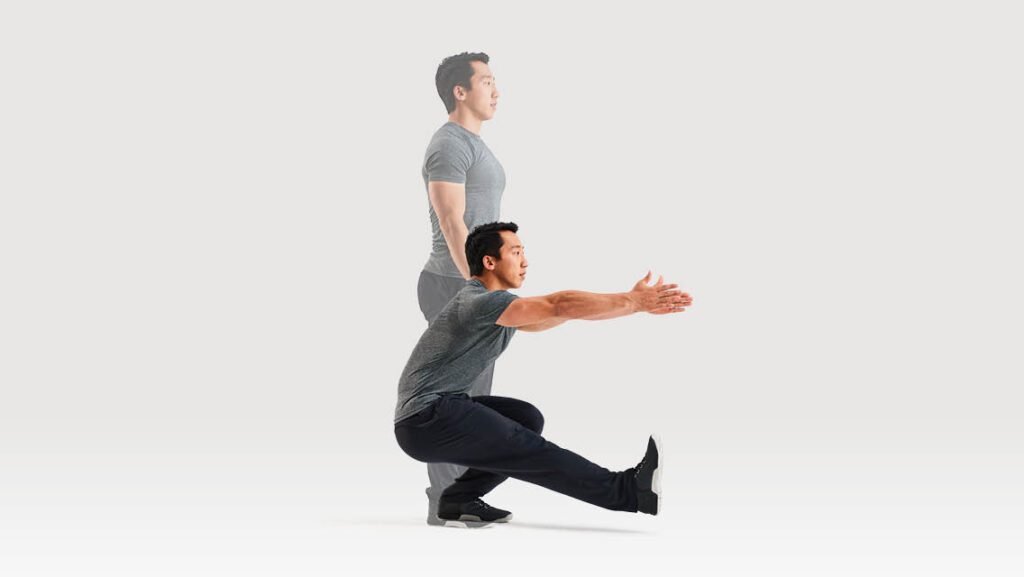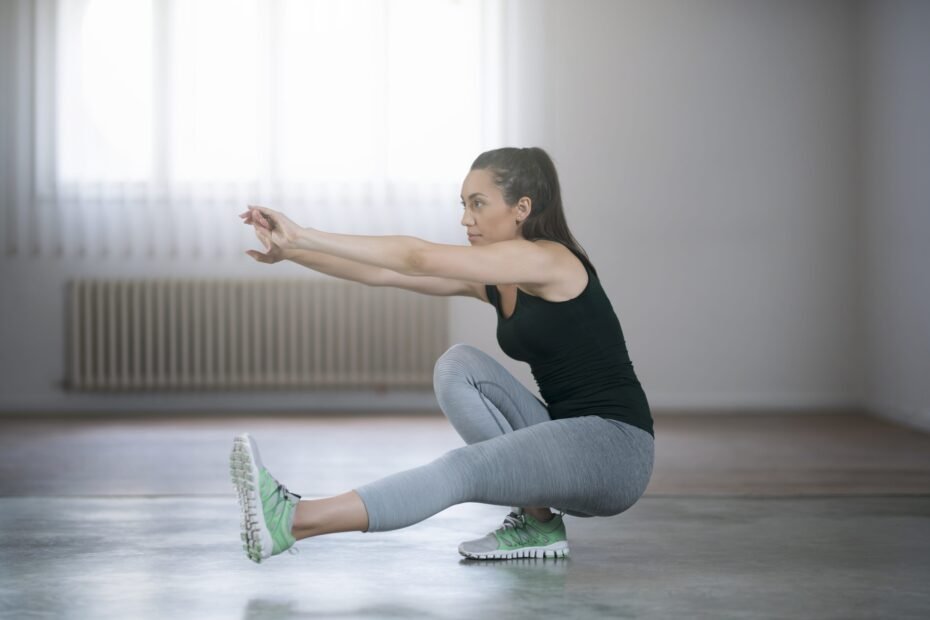The single-leg squat, also known as the pistol squat, is a powerful exercise that challenges your lower body strength, stability, and balance. This guide delves into the intricacies of the single-leg squat, providing step-by-step instructions, insights into the muscles engaged, benefits, variations, alternatives, common mistakes, and essential considerations to help you conquer this impressive movement.
Muscles Worked:
Primary Muscles:
- Quadriceps
- Gluteus Maximus (Glutes)
- Hamstrings
Secondary Muscles:
- Adductors
- Soleus (Calves)
- Core Muscles (Abdominals and Obliques)
How to Perform the Single-Leg Squat:

- Setup: Begin by standing on one leg, with the other leg extended in front of you.
- Balance: Keep your core engaged and your chest up to maintain proper balance.
- Descent: Initiate the squat by bending your knee and hips, lowering your body.
- Depth: Lower yourself as far as your mobility allows, aiming for your thigh to be parallel to the ground.
- Ascent: Push through your heel and return to the standing position.
- Repetition: Complete the desired reps on one leg before switching to the other.
Benefits of the Single-Leg Squat:
- Unilateral Strength: Develops balanced strength in each leg individually, addressing muscle imbalances.
- Core Engagement: Requires strong core activation for stability during the movement.
- Functional Fitness: Enhances real-world movement patterns like walking and climbing stairs.
- Stability Challenge: Improves balance and proprioception through single-leg work.
Variations:
1. Assisted Single-Leg Squat:
- Hold onto a stable surface or use a resistance band for support as you perform the squat.
2. Weighted Single-Leg Squat:
- Hold a dumbbell or kettlebell to increase the resistance and intensity of the movement.
Alternatives:
- Offers a similar unilateral leg workout while providing more stability with the rear foot elevated.
2. Step-Ups:
- Step onto a bench or platform using one leg at a time to target similar muscle groups.
Common Mistakes to Avoid:
- Leaning Forward: Maintain an upright posture to prevent excessive forward lean.
- Knee Tracking: Ensure your knee tracks in line with your toes to prevent improper alignment.
- Lack of Depth: Aim for parallel thighs to the ground or slightly below for proper muscle activation.
Key Considerations:
- Mobility and Flexibility: Adequate ankle and hip mobility are crucial for performing the movement correctly.
- Progression: Start with shallower squats and gradually work on increasing your depth as you improve.
Conclusion:
The single-leg squat stands as a testament to lower body strength, stability, and balance. By mastering its execution, understanding the muscles engaged, appreciating the benefits, exploring variations and alternatives, avoiding common mistakes, and considering key factors, you can seamlessly integrate the single-leg squat into your fitness routine. Approach this exercise with determination, proper form, and a focus on enhancing both unilateral strength and overall lower body fitness for optimal results.
